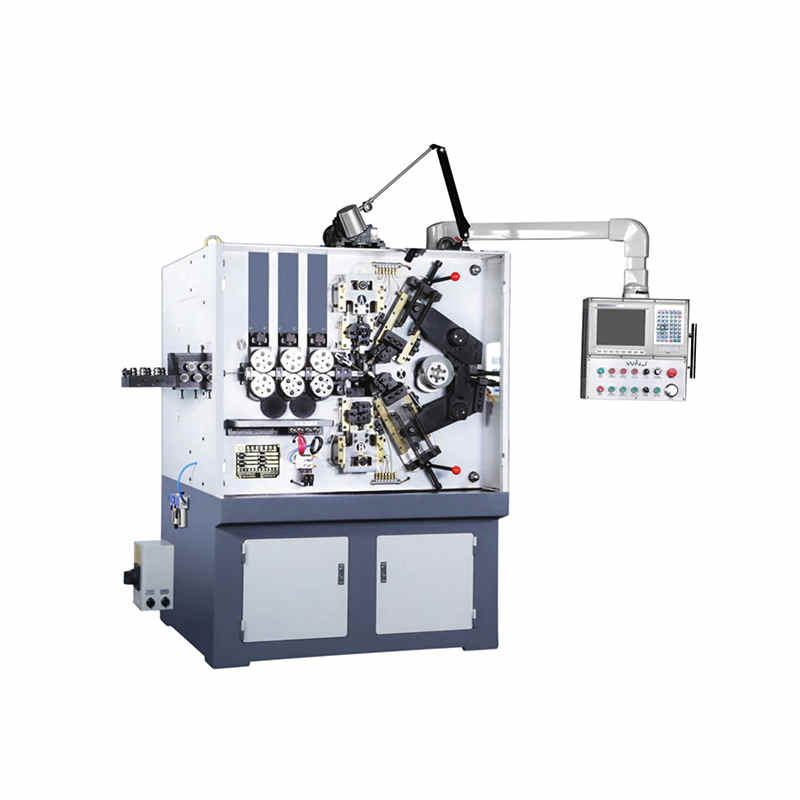What energy-saving features do industrial spring machines use to reduce power consumption?
Industrial spring machines incorporate various energy-s […]
Industrial spring machines incorporate various energy-saving features to reduce power consumption, optimizing both operational efficiency and environmental impact. Here are some common energy-saving features:
High-Efficiency Servo Motors: Many spring machines use high-efficiency servo motors that consume less power while delivering precise control over movement and force. These motors adjust their power output based on the load, reducing energy usage during less demanding operations.Regenerative Braking: Some machines are equipped with regenerative braking systems that capture energy generated during deceleration or stopping phases and feed it back into the system, reducing overall energy consumption.Optimized Motor Speed: Variable Frequency Drives allow motors to operate at different speeds, depending on the demand. By adjusting motor speed to match the required load, VFDs reduce energy consumption during low-load operations and idle times.
Idle Mode Power Reduction: When the machine is not in use or during downtime between operations, smart power management systems can automatically reduce or cut off power to certain components, minimizing energy waste.Sleep Mode: Some machines feature a sleep mode that activates during extended periods of inactivity, significantly lowering power consumption until the machine is needed again.Energy-Efficient Heating Elements: In machines that require heating (e.g., for material processing), energy-efficient heating elements and insulation are used to reduce heat loss and lower the energy required to maintain the necessary temperatures.Rapid Heating and Cooling: Systems that allow for rapid heating and cooling reduce the time the machine spends at high power levels, thereby conserving energy.

Reduced Inertia Tooling: By using lighter and more efficient tooling, the machine requires less power to move parts, especially during high-speed operations. This reduction in inertia translates to lower energy consumption.Optimized Material Handling: Efficient material handling systems reduce the effort required to move materials through the machine, further cutting down on energy usage.Real-Time Energy Monitoring: Machines equipped with real-time energy monitoring systems allow operators to track and optimize energy use. Feedback from these systems can be used to adjust operations for better energy efficiency.Data-Driven Optimization: Data collected from energy monitoring systems can be analyzed to identify patterns of energy use, leading to process improvements that further reduce consumption.
Power Optimization Algorithms: Some machines use advanced software algorithms that optimize power usage by adjusting machine operations based on the specific requirements of each production run, minimizing unnecessary energy expenditure.Load Balancing: Software that balances the load across different components of the machine ensures that no single part is overburdened, reducing overall energy requirements.Enhanced Insulation: Proper insulation of heat-generating components prevents heat loss, reducing the amount of energy needed to maintain operational temperatures.Efficient Cooling Systems: Cooling systems that use less power, such as those incorporating passive cooling methods or more efficient fans, contribute to lower energy consumption.
Low-Friction Bearings and Gears: Using components with lower friction reduces the amount of energy needed to drive the machine, leading to overall energy savings during operation.Automatic Lubrication: Automatic lubrication systems ensure that all moving parts are properly lubricated, reducing friction and the energy required to operate the machine efficiently.Lubrication Monitoring: Systems that monitor the condition of lubrication can adjust application rates to optimize performance, minimizing waste and energy usage.
These energy-saving features not only reduce the operational costs of industrial spring machines but also contribute to a more sustainable manufacturing process by minimizing the environmental impact associated with energy consumption.








